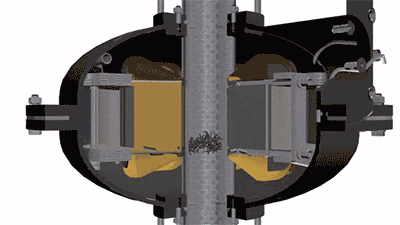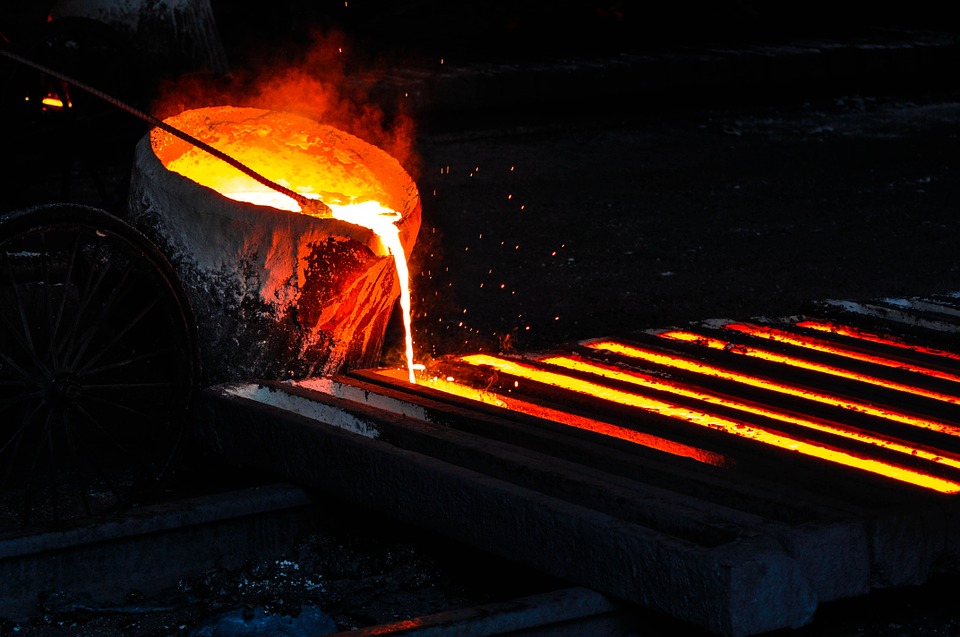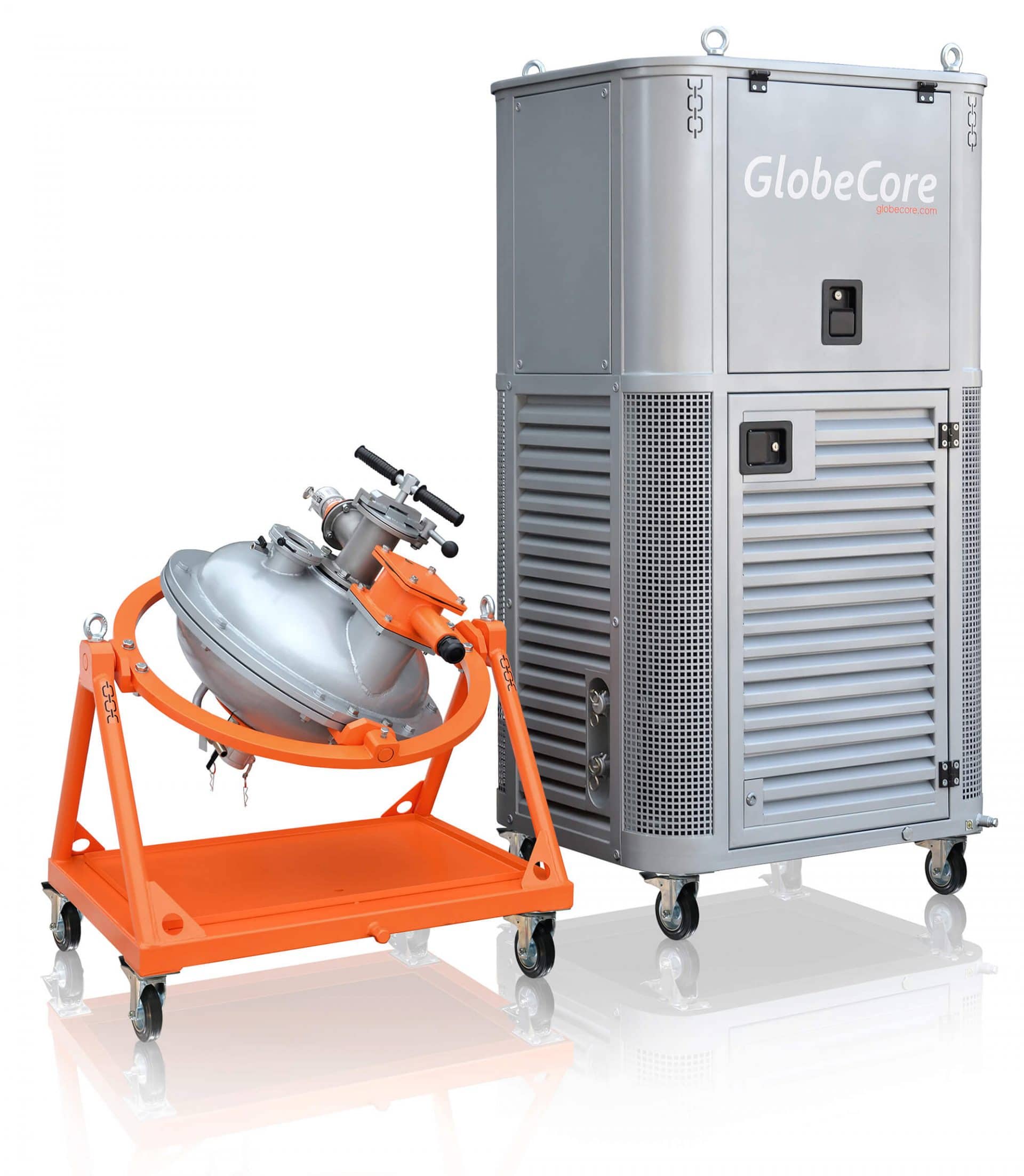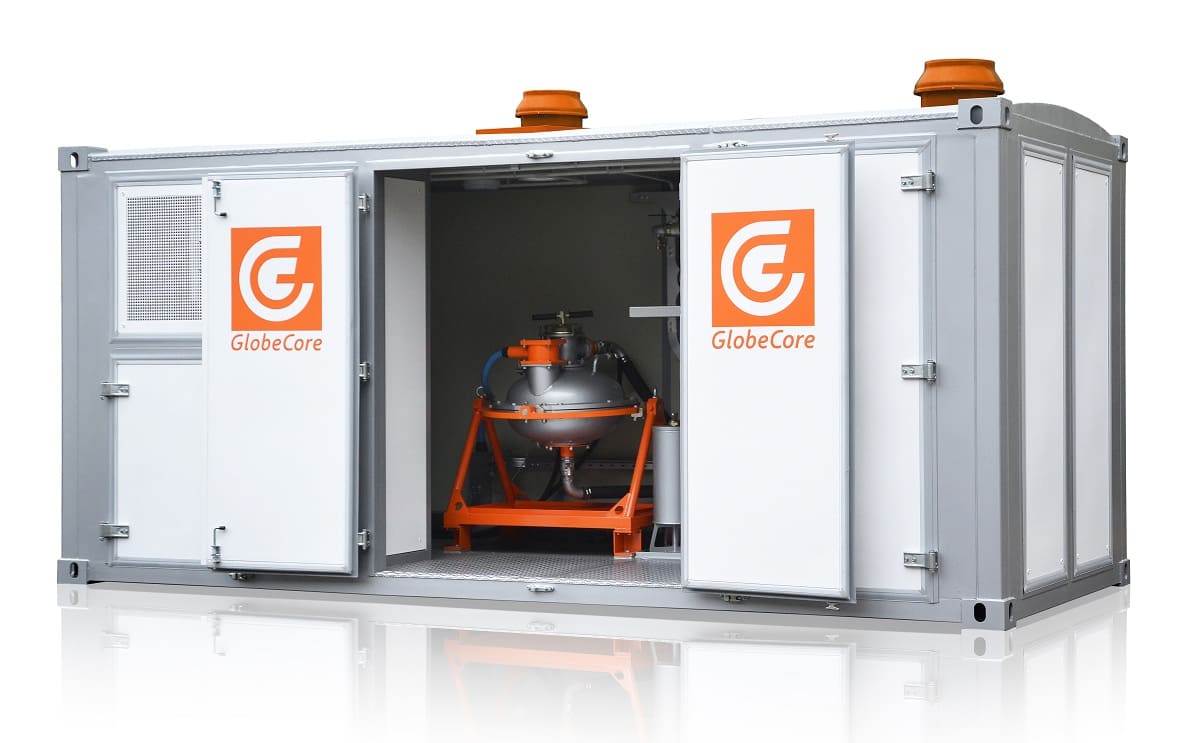Refractory suspension for iron and steel founding is a mixture with a refractory base and a binder — a hydrolyzed solution of ethyl silicate, a gelling agent. The suspension is based on quartz sand and pulverized quartz at the ratio of 1:3. These ingredients do not dissolve in water; therefore, in order to obtain a stable mixture, it is important to grind them thoroughly and to mix them evenly, intensively with the liquid by distributing them throughout its volume. The better these processes are performed, the more stable and homogeneous the mixture will be. In this regard, it becomes relevant to obtain suspensions by means of GlobeCore vortex layer device (AVS).
The use of refractory suspensions of sand in iron and steel founding
Сonventional turning or stamping technologies are irrelevant in manufacturing the metal products, the parts of complex shape and complicated configuration, as well as the thin-walled components. Investment casting is applied in this case. A refractory suspension of quartz sand is used for manufacturing the molds in which the parts are cast. The quality of this mixture determines how well the part is cast, how much time will be spent on preparation and manufacture, the amount of rejected pieces, and other indicators of the production line.
Ceramic molds are made after preparing the models of parts, for example, from wax. Then they are cast in a molding frame or dipped into prepared mixture. The refractory suspension envelops the model and solidifies thereon. The model is removed, and a finished, hollow casting mold is obtained. After additional processing, the part can already be cast in the mold. In order to do that, molten metal is poured thereinto. It fills the mold made from refractory suspension. When the metal solidifies, the shell is removed, eliminated, or broken — various methods are used for this purpose, for example, vibration units.
How is a refractory suspension of quartz sand in ethyl silicate produced?
The technological process for preparing the suspension begins with preparation of a hydrolyzed solution of ethyl silicate which is a binder. Ethyl silicate hydrolysis is carried out by means of special high-speed mixers up to 2,800 rpm. Furthermore, the solvents such as alcohol, acetone, and the hydrochloric acid that acts as a catalyst, i.e. intensifies the processes, are used. This is due to the fact that ethyl silicate does not intrinsically dissolve in water.
The technology for solution preparation in a mechanical mixer implies the initial mixing of ethyl silicate and acetone for 2–3 minutes. Next, the acidified water is added to the solution and mixed for another hour. After preparation, the mixture is allowed to remain for 16 to 24 hours.
Suspension production for iron and steel founding actually begins with sifting dry ingredients and mixing them until they become homogeneous. Next, the mixture is prepared with a paddle mixer after pouring a hydrolyzed solution into the device. The liquid is mixed, and a dry refractory filler is gradually and continuously fed thereinto. 2.5 to 4.5 kg of dry mixture per liter is fed. In different technologies, the gelling agent is added before pouring in or after adding the mixture.
Suspension obtaining by means of a paddle mixer involves mechanical mixing of ingredients. The suspension is thoroughly mixed until a stable, homogeneous mass is obtained. This process takes hours. Next, the refractory suspension is supplied to the molding site and poured into core boxes, a molding frame.
Disadvantages of conventional production technologies
The duration and energy consumption of the process are not the only disadvantages of preparing a suspension by means of a paddle mixer. Adding a gelling agent is a particularly important stage in suspension production. It must be fed with high accuracy, continuity and ensure thorough, even distribution of the additive throughout the mixture volume. Due to a small amount of gelling agent, it is difficult to achieve this in classic technology. Therefore, traditionally, suspension production requires high precision and rather large energy and time input for mixing the ingredients.
Only in this case, there is a chance to obtain high-quality suspensions. Uneven distribution of the gelling agent in the volume considerably downgrades the surface quality of the facing layer of ceramic product, deteriorates the mechanical properties thereof, and may cause cracks.
In addition, the refractory suspension obtained by conventional method may have poor sedimentation stability and break down. Furthermore, the mixture hardening time increases.
It is possible to optimize suspension production and to solve the problems of classic technologies through the use of GlobeCore vortex layer device. In addition, the vortex layer device can also be used in preparing a hydrolyzed ethyl silicate solution. In this case, it is not necessary to use a chemical catalyst for intensifying the processes, because AVS will already ensure high-quality preparation of the substance. Moreover, much less time will be consumed in the technological process.
Applying a vortex layer device in refractory suspension production

The refractory suspension obtained by means of a vortex layer device is processed when exposed to electrolysis processes, high local pressures, acoustic vibrations, and an electromagnetic field. As a result, the ingredients are effectively mixed throughout the volume, additionally crushed, and activated. We obtain a homogeneous mixture with high breakdown resistance, the ability to quickly harden and to form molds without cracks or other defects.
The device is versatile; therefore, it can be used at different stages of the technological process. It can be used to prepare a hydrolyzed ethyl silicate solution, to mix dry quartz sand and pulverized quartz, as well as to actually prepare a refractory suspension with a gelling agent using these products.
Advantages of AVS in producing the refractory suspension of quartz sand
Suspension obtaining by means of a vortex layer device is one of the main tasks which can be addressed using this equipment due to the following advantages:
- Intensified suspension preparation processes
Suspension production is accelerated a hundredfold due to the intensification of processes while preparing the mixtures. According to D.D. Logvinenko, the production time is reduced 700 times.
- Improved quality of products
High-quality distribution of gelling agent over the mass volume reduces the ethyl silicate consumption. Moreover, it results in a higher-quality refractory suspension for creating durable molds.
- Cost-effectiveness
Not only the consumption of expensive ingredients is reduced, but also the energy and time input considerably decreases due to which the cost price of products goes down as well without compromising the quality.
- Ease of use
A vortex layer device can be used both at a large enterprise and in a compact workshop owing to its small dimensions. It does not require a pedestal and is easy to integrate into the existing production line.
Thus, the refractory suspension obtained in a vortex layer device is cheaper and better in quality, and the product yield increases compared to conventional mixture preparation methods. This solution is suitable for optimizing the production lines at casting industry enterprises.
For seeking advice and ordering AVS-100 or AVS-150 vortex layer device, please contact GlobeCore sales representatives.


 AVS-100 Mixing Machine. ...
AVS-100 Mixing Machine. ... AVS-150 Chemical Mixing ...
AVS-150 Chemical Mixing ... AVSk-150 Wastewater Treatment ...
AVSk-150 Wastewater Treatment ...